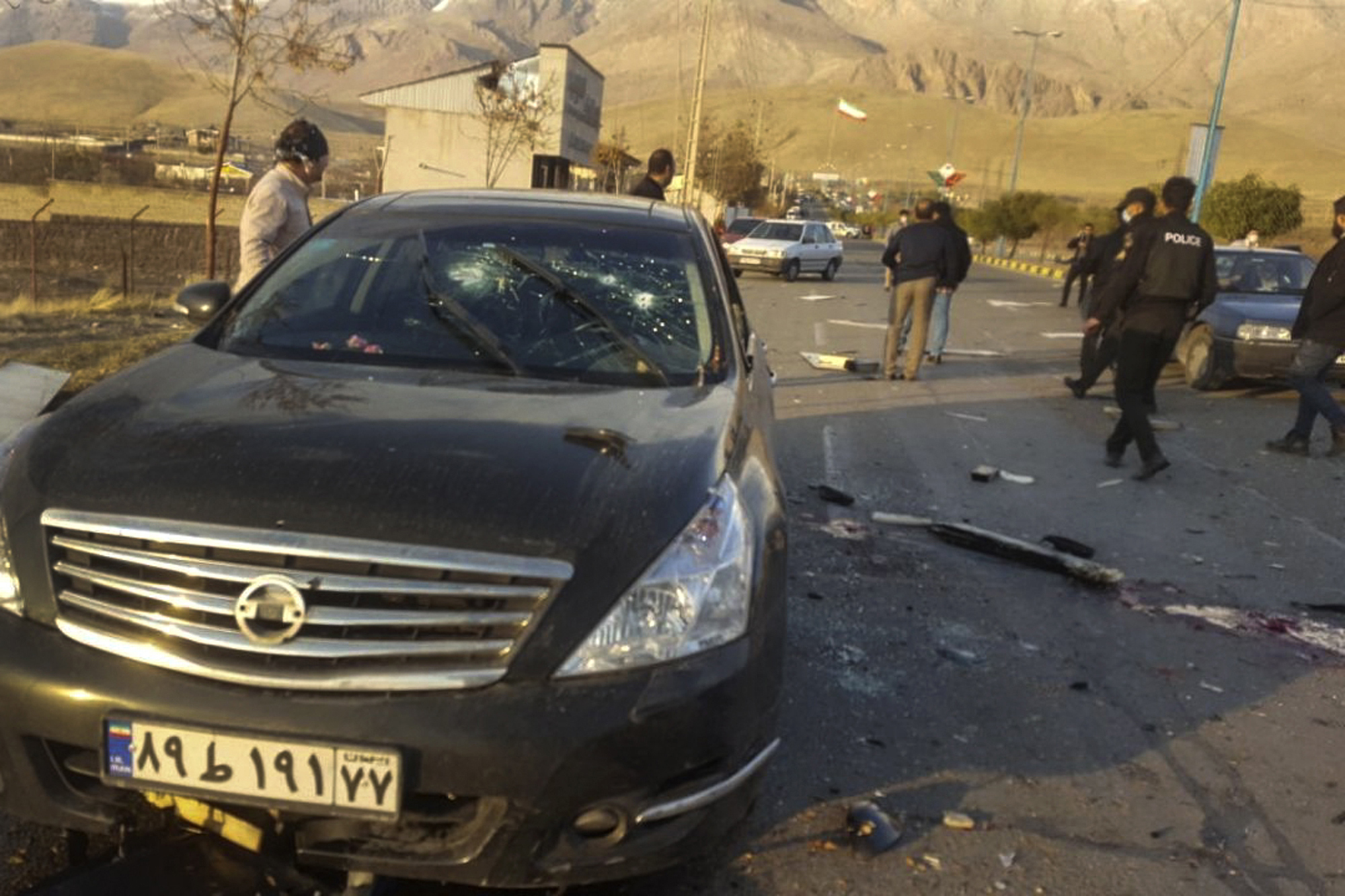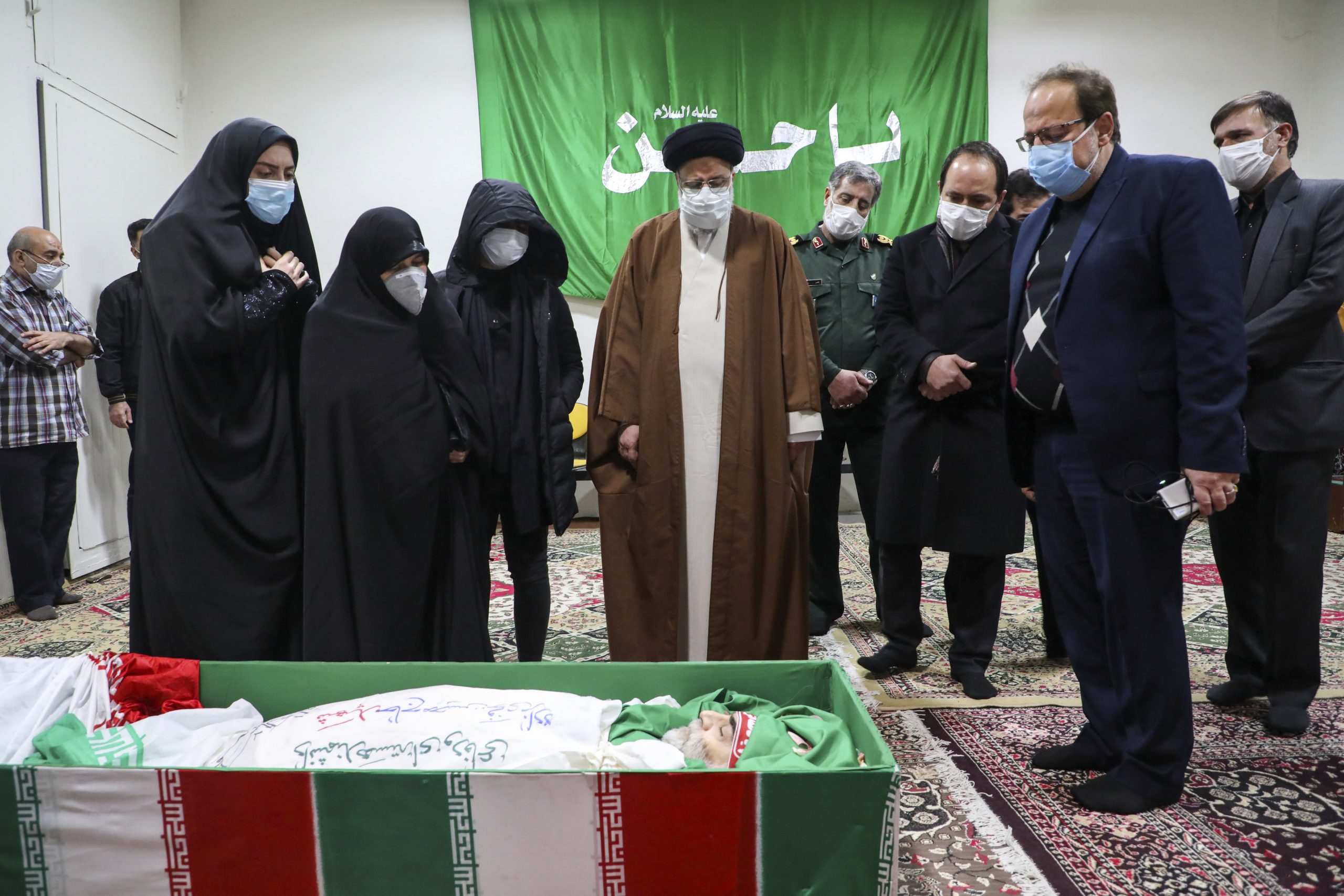Accounts of the killing of a top Iranian nuclear scientist have devolved into finger-pointing and shifting narratives.
Mohsen Fakhrizadeh, the man widely described as one of the leading architects of Iran’s secretive military nuclear program, was killed on Friday when his convoy was ambushed on a rural road 40 miles east of Tehran. Initial news reports indicated there was an explosion and a cacophony of gunfire from several assailants.
Iran claims Israel’s elite intelligence agency Mossad was behind the attack, and the New York Times reported that a senior U.S. official also said that Israel was responsible for the operation. Israel has yet to comment on the killing. Early reports from Iranian authorities, corroborated by an eyewitness, detailed an explosion and gun battle between up to a dozen attackers and Fakhrizadeh’s bodyguards.

No one behind the attack has been arrested, and now, officials have begun to spin a new story about what happened on Friday in an apparent attempt to shift the blame from Iran’s massive intelligence failure that allowed the operation to be successful and the supposed gunmen to escape.
Ali Shamkhani, secretary for Iran’s National Security Council, claimed on Monday that there were not actual operatives on the ground during the attack and that the killing was carried out by a remote-control robotic machine gun affixed to a parked Nissan, according to the Associated Press.
“Unfortunately, the operation was a very complicated operation and was carried out by using electronic devices,” Shamkhani told state TV. “No individual was present at the site.”
The account flies in the face of previous versions given on that same day. One eyewitness, who was not named, said on state media that he saw about a half dozen gunmen open fire on the caravan after the Nissan exploded.
“One gunman was sitting on the road, and he started shooting at my direction,” the witness claimed, according to the New York Times. “I immediately put my car in reverse, but he kept shooting.”
Reports sourced from Iran immediately after the attack also indicated that one of Fakhrizadeh’s bodyguards, Hamed Asghari, covered the nuclear scientist’s body with his own, taking the brunt of four bullets. Fakhrizadeh’s widow reportedly described “constant gunshots whizzing over our head from left and right” during the attack.
Shamkhani claimed on Monday that Iranian intelligence was aware that an Israeli attack against Fakhrizadeh was planned. He further stated that intelligence even knew in advance the road where it was going to happen. The National Security Council secretary also placed blame on leading Iranian dissident group Mojahedin-e Khalq, or the MEK, which seeks the overthrow of the regime.
Shahin Gobadi, a spokesman with the MEK in Paris, told the Washington Examiner over the phone on Wednesday that his group was not involved and, in a statement, characterized Shamkhani’s accusations as “rage, rancor, and lies.” He said the regime’s claims that the MEK is involved in assassinations is “nothing new.”
On Tuesday, an Iranian government spokesman said that the Intelligence Ministry had given Fakhrizadeh’s security team “specific and exact details” of a possible assassination attempt weeks in advance. The missive was an apparent jab at the military’s Islamic Revolutionary Guard Corps, which was charged with guarding the scientist.

Given that the attackers have not been apprehended, and Israel is believed to be behind the slayings, Iran’s mullahs are likely fearful about the lack of control that the country’s military and intelligence has over preventing major incursions of that nature. Fakhrizadeh was under close watch, and the slaying is a black eye for the regime, which is already grappling with overwhelming sanctions and the embarrassment of accidentally shooting down a civilian airliner in the aftermath of the successful U.S. operation to kill top Iranian military commander Qassem Soleimani.
James Phillips, senior research fellow for Middle Eastern affairs at the Heritage Foundation, said in a statement to the Washington Examiner on Wednesday that he believes the narrative shift toward the robotic gun is “designed to mask the Revolutionary Guards latest failure.”
“It would help explain why none of the perpetrators were caught and distract attention from the fact that Israel almost certainly had inside help from Iranians opposed to the regime and evidently has penetrated the regime’s security services,” he said.
The regime has also faced domestic unrest, in particular, in November 2019, when hundreds of protesters were killed in demonstrations that began after fuel-price hikes but morphed into an expression of broader discontent with the ruling Iranian government.
Phillips said the security failure on the part of Iran “further undermines the intimidating image of the regime at a time when it is increasingly hated and opposed by its own people, who repeatedly have staged massive anti-government protests over the last 10 years.”
The CIA declined to comment on this report when contacted by phone. The Washington Examiner reached out to the State Department but did not immediately receive a response.
